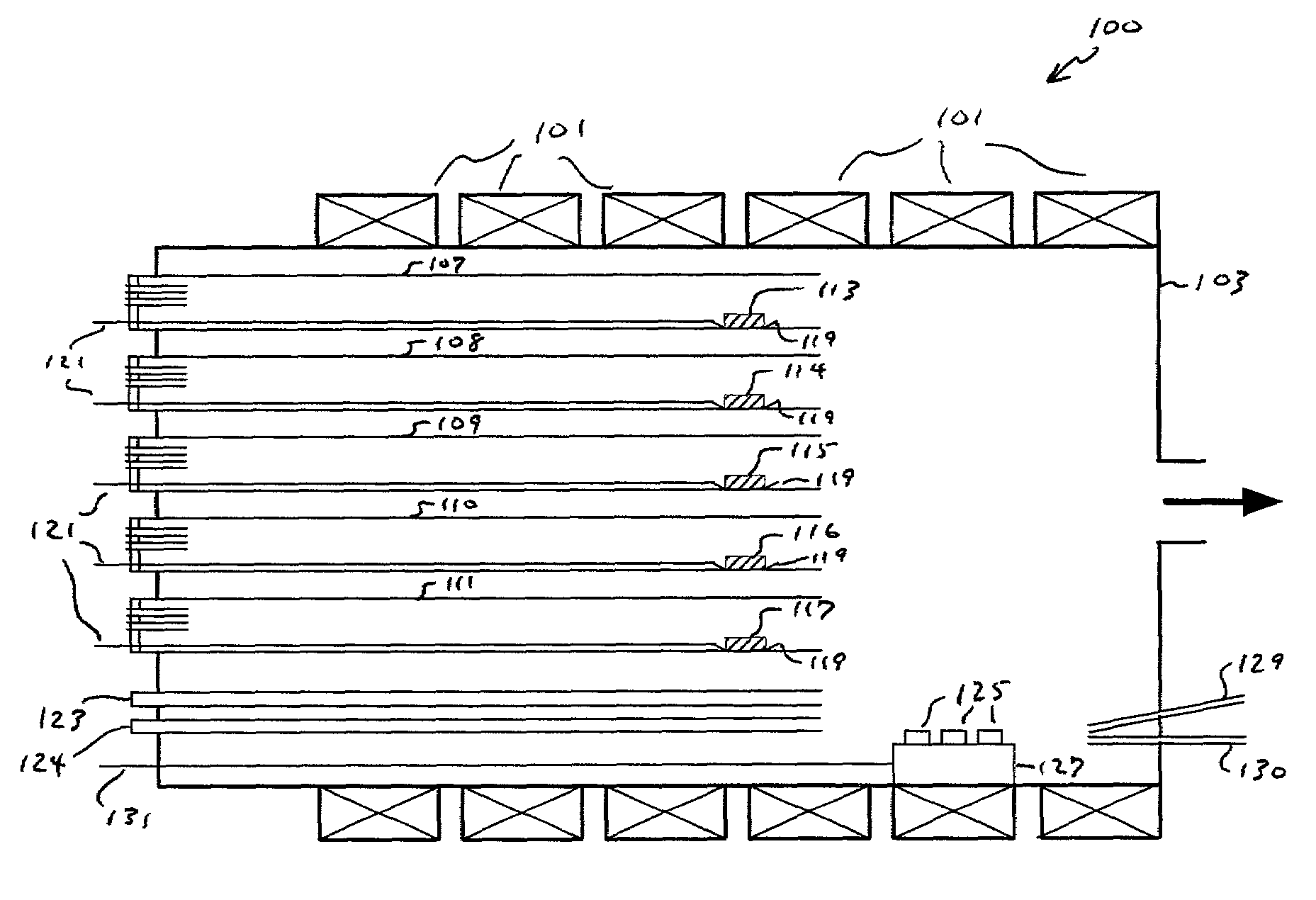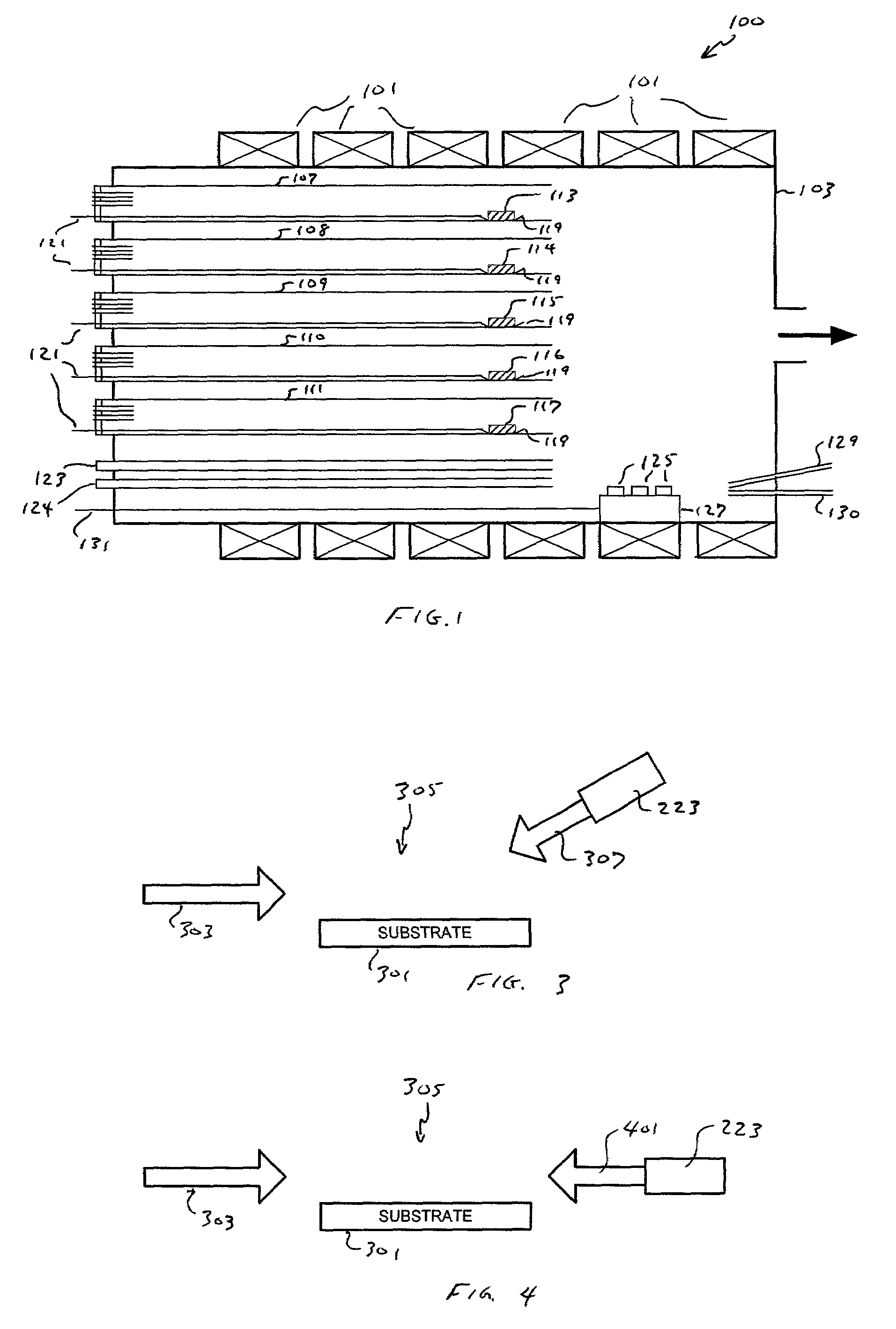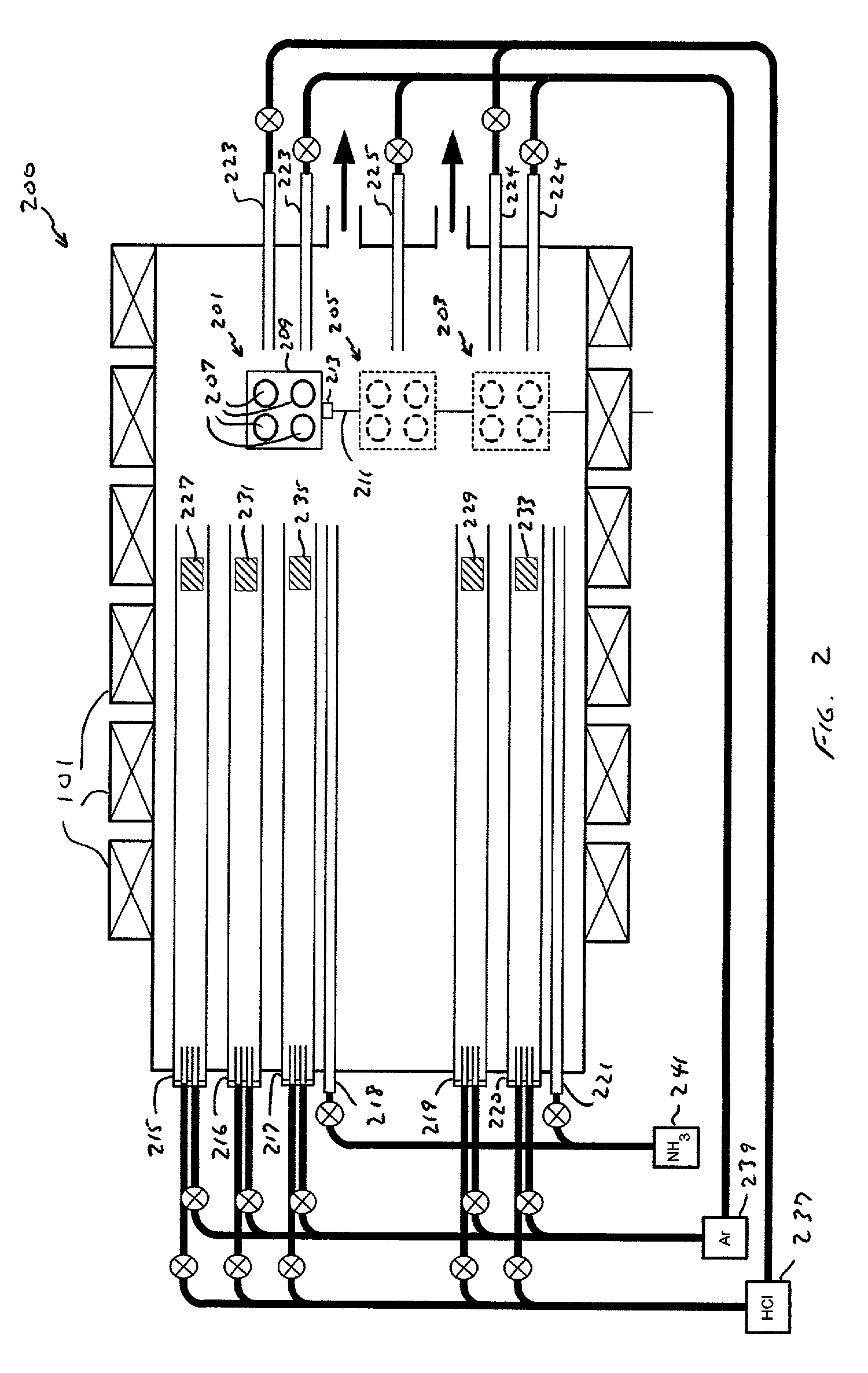Apparatus for epitaxially growing semiconductor device structures with sharp layer interfaces utilizing HVPE
a semiconductor device and epitaxial growth technology, applied in the direction of crystal growth process, polycrystalline material growth, chemically reactive gas, etc., can solve the problems of high electric field breakdown, direct band gap structure, high thermal conductivity, etc., to reduce gallium surface area, slow growth rate, and prevent thermal shock
- Summary
- Abstract
- Description
- Claims
- Application Information
AI Technical Summary
Benefits of technology
Problems solved by technology
Method used
Image
Examples
Embodiment Construction
[0027]The present invention provides a method and apparatus for producing submicron layers of III-V compounds utilizing HVPE techniques. As a result of the ability to fabricate such layers, the present invention allows a variety of device structures to be realized as well.
Processes
[0028]FIG. 1 is a schematic illustration of an atmospheric, hot-walled horizontal furnace 100 as used with the preferred embodiment of the invention. It should be understood that the invention is not limited to this particular furnace configuration as other furnace configurations (e.g., vertical furnaces) that offer the required control over the temperature, temperature zones, gas flow, source location, substrate location, etc., can also be used. Furnace 100 is comprised of multiple temperature zones, preferably obtained by using multiple resistive heaters 101, each of which at least partially surrounds furnace tube 103. It is understood that although reactor tube 103 preferably has a cylindrical cross-sec...
PUM
| Property | Measurement | Unit |
|---|---|---|
| temperature | aaaaa | aaaaa |
| temperature | aaaaa | aaaaa |
| surface area | aaaaa | aaaaa |
Abstract
Description
Claims
Application Information
 Login to View More
Login to View More - R&D
- Intellectual Property
- Life Sciences
- Materials
- Tech Scout
- Unparalleled Data Quality
- Higher Quality Content
- 60% Fewer Hallucinations
Browse by: Latest US Patents, China's latest patents, Technical Efficacy Thesaurus, Application Domain, Technology Topic, Popular Technical Reports.
© 2025 PatSnap. All rights reserved.Legal|Privacy policy|Modern Slavery Act Transparency Statement|Sitemap|About US| Contact US: help@patsnap.com



